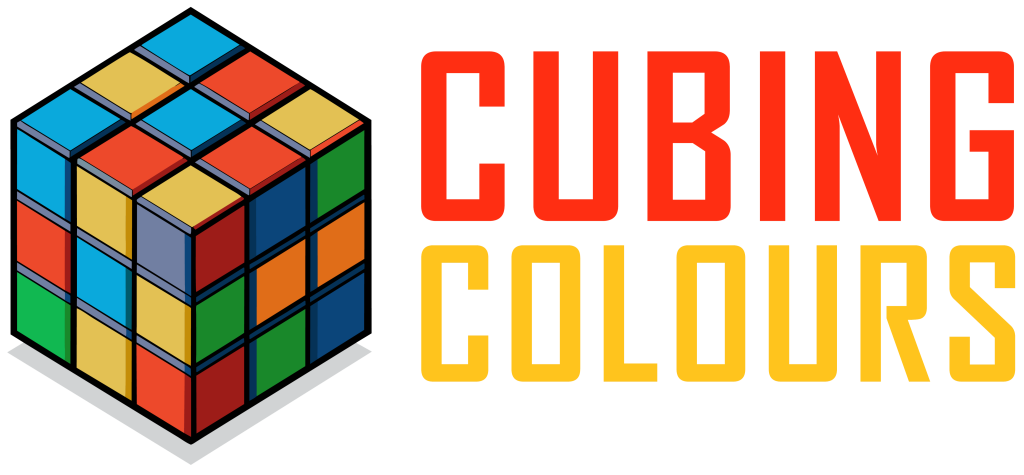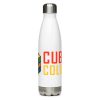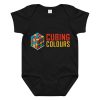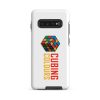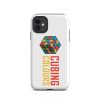How to Solve a 3×3 Rubik’s Cube.

Introduction
A true classic of puzzle-solving, the Rubik’s Cube is known far and wide. However, very few people know how to solve it. Most view the colorful squares and graceful twisting of the cube as a nearly impossible feat, yet with a little bit of time, patience, and practice, anybody can master it.
The Rubik’s Cube was invented in 1974 by Ernő Rubik, a Hungarian architect and professor. It was first known as the “Magic Cube,” which rapidly gained international popularity after its commercialization in the 1980s. The Rubik’s Cube continues to be a huge part of pop culture, inspiring millions around the world to try their hand at solving it. Whether you are trying to find a new hobby or just want to show off to your buddies, learning how to solve a 3×3 Rubik’s Cube is a complete and fulfilling achievement.
So why learn to solve it? Apart from a sense of accomplishment, solving a Rubik’s cube sharpens one’s critical and analytical skills, increases patience, and enhances cognitive ability. It nurtures reasoning among people’s brain pathways and reinforces capturing patterns involved in working from top-down and stepwise through difficult processes. Above all, with the aid of solving Rubik’s cubes, you can flex your brain and improve memory and concentration.
The guide gives rather easy access to the solving of the Rubik’s Cube. Be you a total beginner or someone who tried, thought, and/or still does think of giving up and/or has somewhat lost hope, this stepwise guide will break everything into digestible portions: that is, the entire business of how to solve a Rubik’s Cube 3×3, step by step, from the beginning to the end.
Understanding the Cube Structure.
Before getting into the steps, it is important to know the structure of the cube. A typical Rubik’s Cube consists of six faces colored white, yellow, red, orange, blue, and green. Each face consists of nine smaller squares arranged in a 3×3 grid. The centerpieces of each face cannot rotate, whereas the edge and corner pieces can rotate when the cube is twisted.
Before You Begin.
Understanding the Cube’s Structure.
Each letter corresponds to a move in the Rubik’s Cube notation:
U: Up (turn the top layer)
D: Down (turn the bottom layer)
L: Left (turn the left layer)
R: Right (turn the right layer)
F: Front (turn the front layer)
B: Back (turn the back layer)
As these primary moves are understood, it will be easy to follow algorithms to solve the cube. Moreover, knowing the orientation of the colors on the cube is important. The white face is typically opposite the yellow face, the blue face opposite the green face, and finally, the red face is opposite the orange one.
Common mistakes beginners make.
Making unnecessary moves is one of the well-known blunders in solving the Rubik’s Cube. A beginner often complicates things by twisting the cube in random directions. While at times this may appear to be a good strategy, you should in all cases try to stick with the definite algorithms for each step in order not to undo your progress.
Another classic problem is misalignment. While maneuvering the pieces into position, they may not properly align with the center squares. This is a very normal part of solving a 3 by 3 Rubik’s Cube and can generally be rectified by twisting some parts a few times.
Essential tips for beginners.
One crucial aspect of solving the Rubik’s Cube 3×3 is knowing how to exercise a lot of patience. It is easy to get frustrated, but learning every step and practicing with it is the way to go. As one gets to learn the movements of the cube, speed now develops while solving.
Otherwise, learning finger tricks is another means of making it easy to solve the cube. These simple and unique in their proper use will allow the rotation of layers without taking one’s hands off the cube itself. With time and practice, speed and accuracy would be achieved.
Lastly, practice makes perfect here. The more you do it, the better you will become at seeing patterns and applying correct algorithms in solving the Rubik’s Cube.
Step 1: make a daisy.
What is a Daisy?
This is the process of making a white “daisy” on the top layer for starters when solving the Rubik’s Cube. In this case, it involves the positioning of the white edge pieces around the yellow centerpiece, so that they form such a pattern that resembles a daisy.
Why Is This Important?
The daisy represents preparation for an easy and very fast Blanco cross making it afterward. These pieces will be in the ideal position to ease the next setting.
How to Do It.
Construct the daisy. The color top layer should be rotated (U) so an edge piece departs, leaving it as the only orientation to the yellow center. You will need to turn some more pieces like the front (F), left (L), right (R), and back (B) layers to make sure that these pieces lined up correctly. This is where the notation comes in handy; use it to guide your movements and align the pieces properly.
Troubleshooting Some Common Problems.
If some pieces go astray, don’t waste your time worrying. It’s a common rookie problem. Just find it and do a little rotating to make it right again. Did you put it upside down? Probably, do a little rotation of the top layer till it directs you to the right way.
Step 2: make a white cross.
Aligning the White Edges.
The last stage is creating the white cross via the alignment of the white edge pieces and adjacent faces’ centerpieces. The joining of each white edge means it should have direct connections to both the corresponding centerpiece and the centerpiece of the adjacent color.
Common Troubles and Their Solution.
Flipping edges incorrectly is the most common problem at this stage. It should have the opposite colored surface showing. To correct this, you would have to do an algorithm that flips the pieces to their proper orientation. You may take some time playing with it to get it down pat, but it will eventually become second nature.
Envisioning Next Steps.
When you finish the white cross, you are set to advance to solving the white corners. This is the next step. The white cross serves as a foundation for the remaining structure of the cube.
Finding the White Corner Pieces.
With the white cross completed, it’s time to put your focus on putting the white corners in their relative places. These pieces must be situated at their correct place on the top layer with the white color facing up.
Step 3 – Align the White Corners.
Correcting Misaligned Corners
However, sometimes these white corners may not be placed correctly or may be flipped in an incorrect manner. Therefore, in such cases, one may have to use a simple algorithm to move them to their desired locations without disturbing what has already been done on the white cross.
Key Algorithm.
The most crucial one for this step is the right-hand rule. This is a sequence of maneuvers allowing the corners to be placed winningly and then also in a pretty fast way. Train yourself on this algorithm until it sounds and feels easier to apply.
Step 4: Complete the second layer.
The second layer of the Rubik’s Cube consists of the middle edge pieces. These pieces need to be put into the correct position and need not be disturbed with the white face.
What to Do with the White Face While Inserting Edge Pieces.
To insert the edge pieces, a series of algorithmic moves is needed to perform insuring without disturbing the white face. This step is usually difficult for beginners, but with practice, you will be able to perform the movements more smoothly.
Algorithm to Complete the Second Layer.
This algorithm involves turning the layers in different directions and placing edge pieces in their correct spots. With this step successfully accomplished, turning a new page will pose no difficulty; the second layer will then be completely solved, leaving you to move on to the yellow face.
Fixing Edge Unaligned.
Use the reverse of the insertion algorithm to get them back to their initial position should it happen to an edge even one time. Practice the algorithm many times until you can do it without having to confuse yourself.
Step 5: Get the Yellow Cross.
The Yellow Cross Pattern.
At this point, the yellow face deserves most of your focus. The first thing that you will do is create the yellow cross. You will solve a dot, an L-shape, or a line in the yellow face, depending on the yellow face’s state, before actually achieving the yellow cross.
Important Algorithm To Solve It.
To achieve the yellow cross, use the algorithm that turns the current yellow configuration into a yellow cross. The algorithm may be required a few times to achieve the desired yellow cross configuration.
How to Fix Common Mistakes.
If the yellow cross does not form as expected, check your moves closely. Very often, a minor mistake in the algorithm or a wrong rotation will ruin the cross from appearing. Check the configurations again and try.
Step 6: Complete the Yellow Face.
Aligning Yellow Corners.
Next, you will have to align the yellow corners. The yellow pieces are to be positioned on the top layer in their correct places with the yellow side facing up.
Key Algorithm.
To align the yellow corners, one uses a simple algorithm that shifts the pieces into position. Once the corners are aligned, you’ll have a complete yellow face.
Determine Whether or Not the Yellow Face Is Aligned Correctly.
Make sure that the yellow corners are positioned correctly. If they aren’t, repeat the necessary steps to orient them without disturbing the other completed parts of the cube.
Step 7: completion.
The final step consists of positioning the last layer’s edges. Edges need to be swapped in order to facilitate the completion of each face, which will be done using the appropriate edge-swapping algorithm, and therefore, will lead to the complete solution of the cube.
Edge Swap Key.
Activate the edge-swapping algorithm in sequence to finish the last stage of the Rubik’s Cube solution. Double-check for any errors prior to making the final statement regarding the complete solution of the cube.
Confirming a Fully Solved Cube.
The cube is solved when the edges and corners align! Congrats!
Common Pitfalls and Fixes.
The last layer can be tricky, and some beginners may meet with challenges at this step in the solution. At this stage, patience is key; movement should be checked carefully, and feel free to trace back and rectify issues.
Conclusion.
You have attained the most important skills to solve a 3×3 Rubik’s Cube. Solving Rubik’s cube is such valuable skills as problem-solving skills as well as sharpening the mind. Once you get comfortable with the steps, you can learn advanced techniques for speed solving such as CFOP, Roux, and ZZ.
Practice settling the Rubik’s Cube-the best way to master it. You will become so much more efficient and faster. Join some online communities invest some time in exchanging tricks and tips, and challenge yourself to improve your time.
Happy cubing!
Challenge Yourself!
Try to solve the cube faster every time!
Join cubing communities and take part!
Solve the Rubik’s Cube with all its hidden secrets through Cubing Colors!
Cubing is what we bring in the digital. Be at Cubing Colors if you need step-by-step guides on how to solve the Rubik’s Cube as a beginner or if you are an expert cuber looking for advanced solving techniques. Get started on your cubing journey as you interact with our tutorials and online solvers and join a community of passionate cubers where learning is brought to a whole new level of fun. Learn the art of interfacing the Rubik’s Cube with the internet so that you know more about your skills enhancement.
Ready to solve magic cube 3×3 like a pro? Join Cubing Colors today and turn every twist into a triumph!
